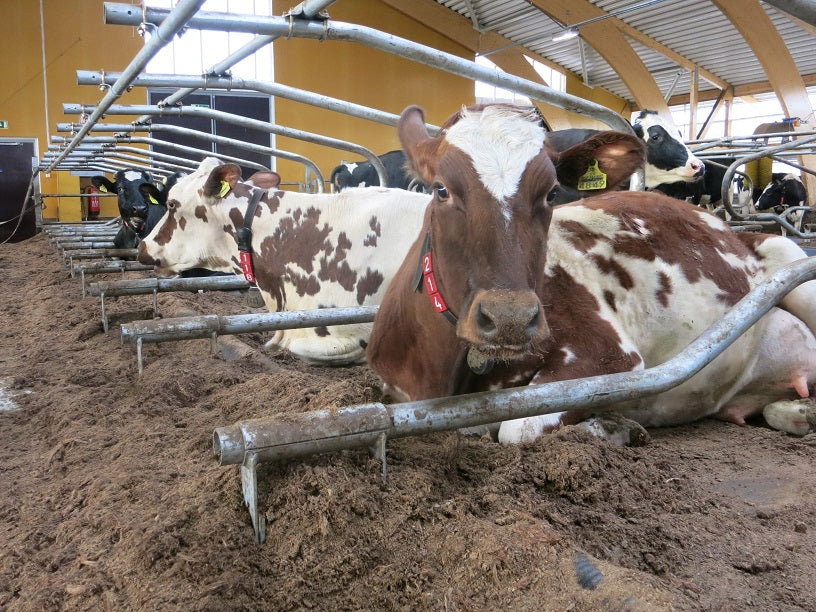”We don´t want to have any gate hassle in our new barn!” We hear this comment many times from the farmer who is planning a new robot barn. An idea behind this comment is, that the barn would be as open and simple as possible and cows touch the steel as little as possible.
Right free stall dimensions are very important. When a cow is standing up, we design stall so that she doesn´t hit to any pipe. When she lays down, touch to a stall divider must be very minimal, preferably no touch at all. In other words, steel pipes determine the location of the cow but without a touch. Bad model of the stall divider or poor stall design with wrong dimensions can be seen as polished metal, due to constant contact.

By the feed alley, it is very obvious that a cow touches the steel. Neck rail as a feed fence combined with reaching outfeed from bunk easily causes neck abrasions, especially if the feed is not pushed closer constantly. Research shows cow´s need to get feed to be higher than the pain she feels in order to reach it. In headlocks, there is more steel around the cows, but the pressure to the body to reach feed is more distributed. But also with headlocks, there is a risk to abrasions. Enough feed available on the feeding table is more important than the type of the feed fence.
But what about other fences and gates in the barn? We have measured labour time in robot barns walking behind the farmers during morning duties and have noticed that an inadequate gating causes a lot of extra work. Typically in robot barns, individual cows are moved unlike in parlour barns where people move animals more in groups. When moving a single cow in a barn with poor gating, there might be a need of an extra person to help. In some barns, people are acting as gates to keep fetched cows for example in front of the robot because a fetch pen and right type of gate is missing.

One main 4dBarn Design principle is that one person can move a single cow easily and safely between different areas in the barn. On the other hand, a good gating contributes cows voluntary moving to the robot. For example, there should be 24/7 fluent cow traffic from the fresh cow´s VIC-group (Very Important Cow) through well designed one-way gates. Cows do learn to use these gates and you can even teach cows to use them. When cows are walking narrow and turning alleys, sharp corners and sticking nuts must be avoided. The injury can be the reason why a cow doesn´t want to walk on it. Be extra careful when installing gates. One centimetre steel in the wrong place can be too much for a cow!
People need turning bridges to walk with clean boots to robot rooms, without a need to step on a dirty manure alley. Washing boots take surprisingly much time during working shifts. Also, people´s moving must be fluent and easy.
Gates and gating, in general, can look like a hassle. Gates are not more than welded steel, not rocket science. An investment to good gating pays back with better functionality and labour efficiency. In our 4dBarn gate plans, each gate has a certain function to ease daily work in a robot barn.
Introduction video of gates in the robot barn (6 minutes)


